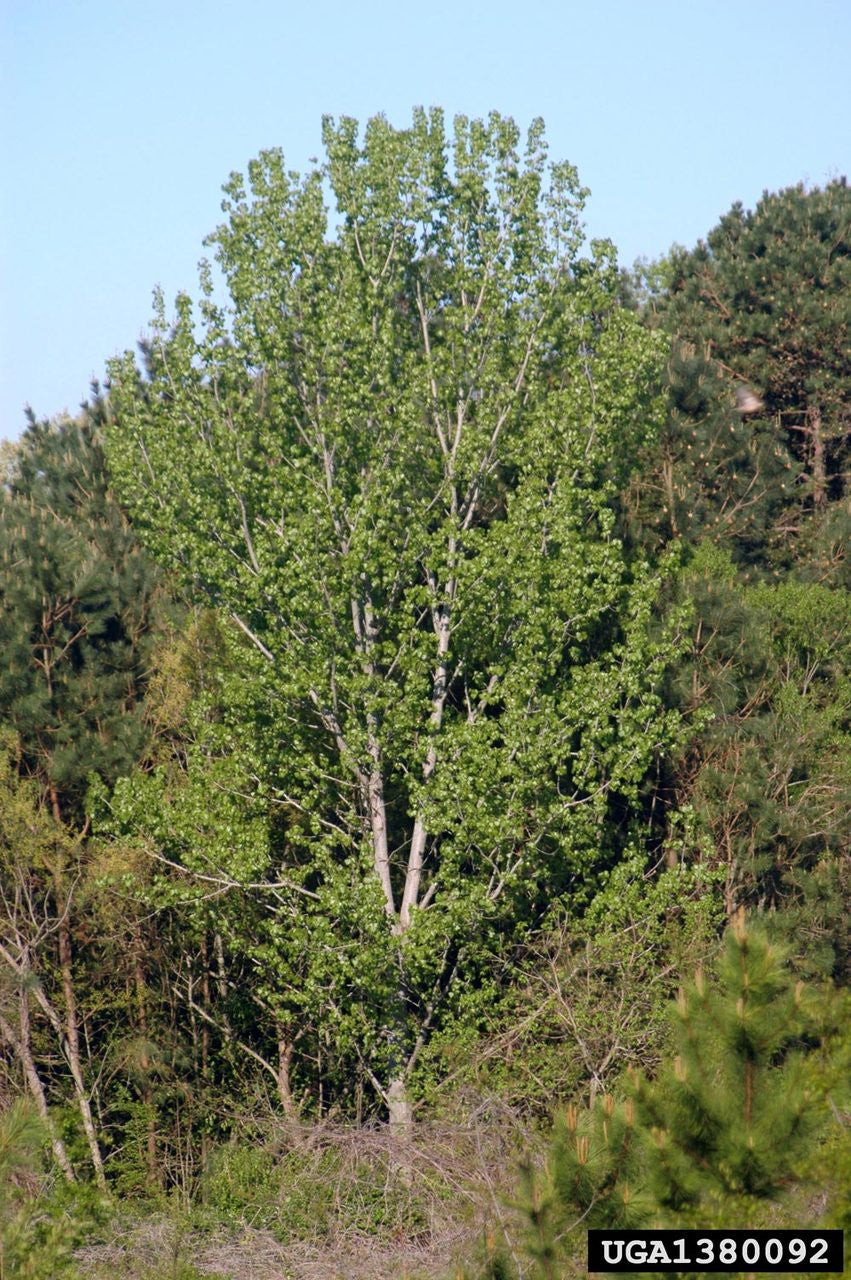Bareroot Plant Material
Cottonwood
Cottonwood
Couldn't load pickup availability
25 plants per unit
Populus deltoides, or Cottonwood, the official Kansas state tree, occurs throughout Kansas. It grows to 70 to 100 feet in height and spreads 50 to 70 feet. Cottonwood is a fast growing tree when it has adequate moisture and often grows as much as 8 feet per year.
Leaves, Stems and Fruit
The leaves are simple and alternately arranged on the stem. Leaves are triangular with pointed tips and broad base and they are 2 1/2 to 5 inches long and nearly as wide. Flowers appear before the leaves in April. Male and female catkins are on separate trees. The fruit mature and the "cotton" produced by the female trees is released in May or early June. Bark of young trees is yellow-green and smooth. Older bark is ashy-gray, deeply furrowed, with wide, flat topped ridges.
Uses
Timber - Cottonwood may be used in pulp, and its lumber is used in pallets and low grade construction.
Fuelwood - Cottonwood's fast growth offers potential for fuelwood production. It is easily processed into fuelwood, but it burns fast and has low heat production.
Wildlife - Cottonwood provides cover for several kinds of wildlife such as turkey and deer. Both whitetail and mule deer browse on twigs and foliage.
Windbreaks - Cottonwood may be used in windbreaks. Because of its large size and rapid growth, it should not be planted closer than 25 feet from slower growing plants.
Adaptation and Soil
Cottonwood has adapted statewide and grows best on moist, loamy soils but it will grow on most soils if adequate moisture is available. Moisture is a limiting factor on most upland soils.
Spacing
Normally spacing is 8 to 18 feet within the row and 20 to 24 feet between rows in multiple row plantings.
Culture
One year old, bare-root seedlings, 18 to 24 inches tall are used in plantings. The seedlings are easy to establish if adequate water is available. They respond well to good weed and grass control, especially during the first 3 years. They can not tolerate shade.
Pests
Cottonwood is plagued by several insect and disease pests which are especially injurious on low vigor trees. Maintain vigor by assuring adequate soil moisture.



